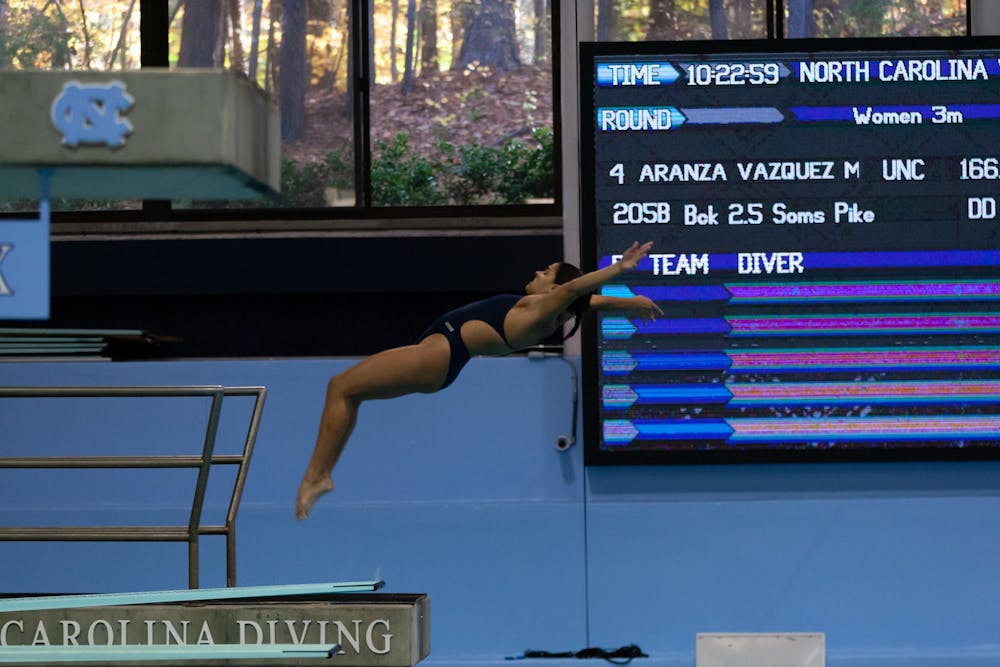Unbeknownst to many UNC students, several Olympians compete regularly on campus.
Aranza Vazquez and Anton Down-Jenkins, who both made the trip to the 2020 Tokyo Olympics to compete for Mexico and New Zealand, respectively, are just a few of the talented athletes on the North Carolina diving roster. Despite the team’s level of international experience, many people don’t know how the sport actually operates.
The Daily Tar Heel interviewed UNC diving standouts Vazquez, Down-Jenkins, Alex Hart and Paige Burrell to learn more about how diving works.
Many divers initially start out in other sports, such as gymnastics or swimming. They’re also all anaerobic sports, which Burrell describes as “power elegance.”
Hart and Burrell both got their start in gymnastics, and said the two sports share similar twists and flips, making their skills there easily transferable to diving. Down-Jenkins started out as a swimmer but wasn't too enthusiastic about it. So, his mom put him in a summer program and he’s been diving ever since.
Diving meets usually start with a big team warmup, which includes running, stretching and muscle activation. UNC divers have access to lots of equipment on the deck, including a trampoline, tumble track and diving board that goes into a crash mat. This equipment helps the divers break down their dives and practice the movements they’re going to do later, but on dry land.
The team then moves to the pool to do a few skills and drills to help get in sync with the rhythm of the boards and get ready to do the dives in competition.
In NCAA meets, every diver gets one shot at each of their six dives. There are five different diving directions: forwards, backwards, reverse, inward and twist.
“We have to do one of each five, and then we can double up in one — whatever we feel more comfortable with,” Down-Jenkins said. “Wherever we have another strong dive to do, we’ll double up.”




